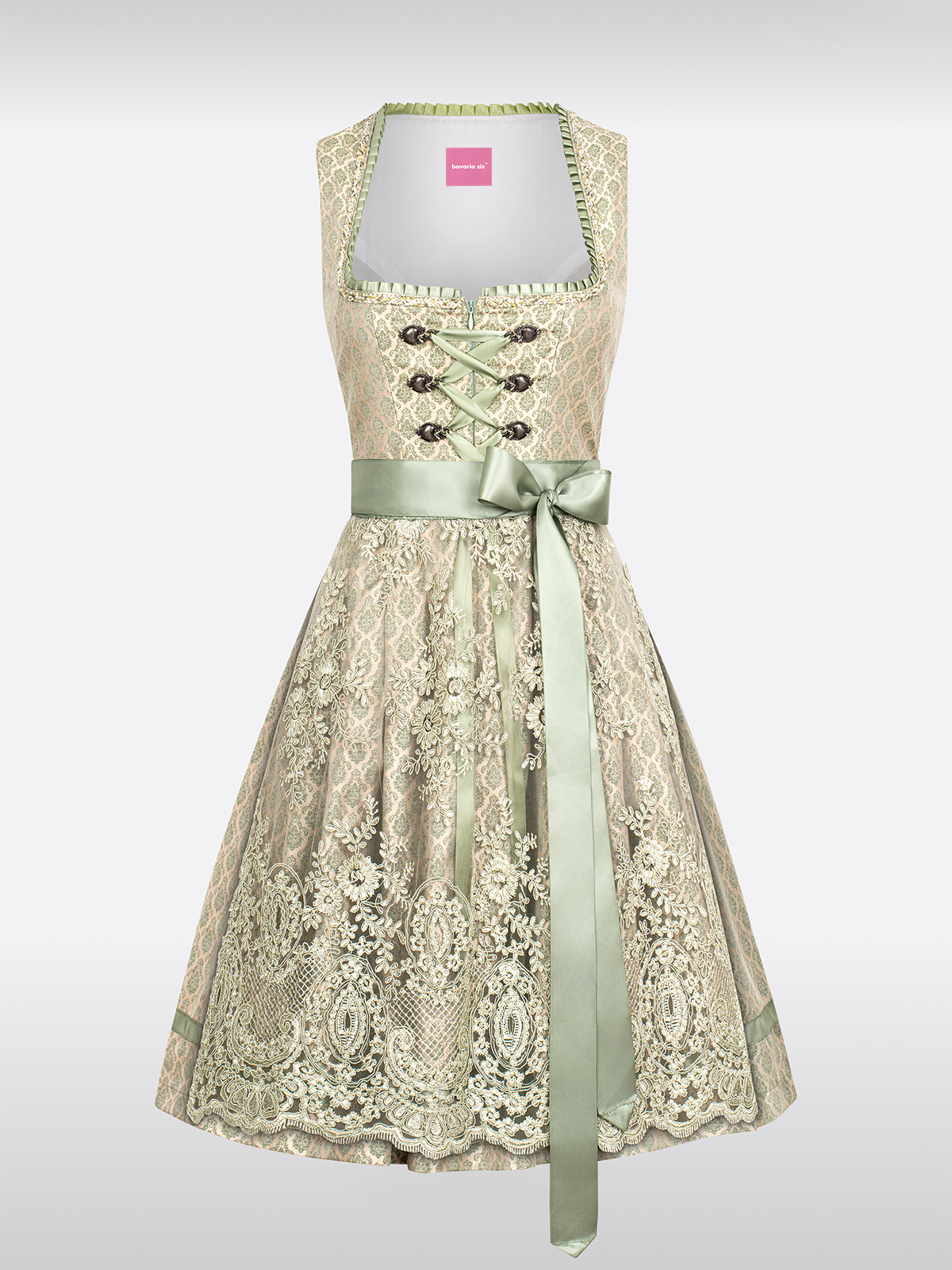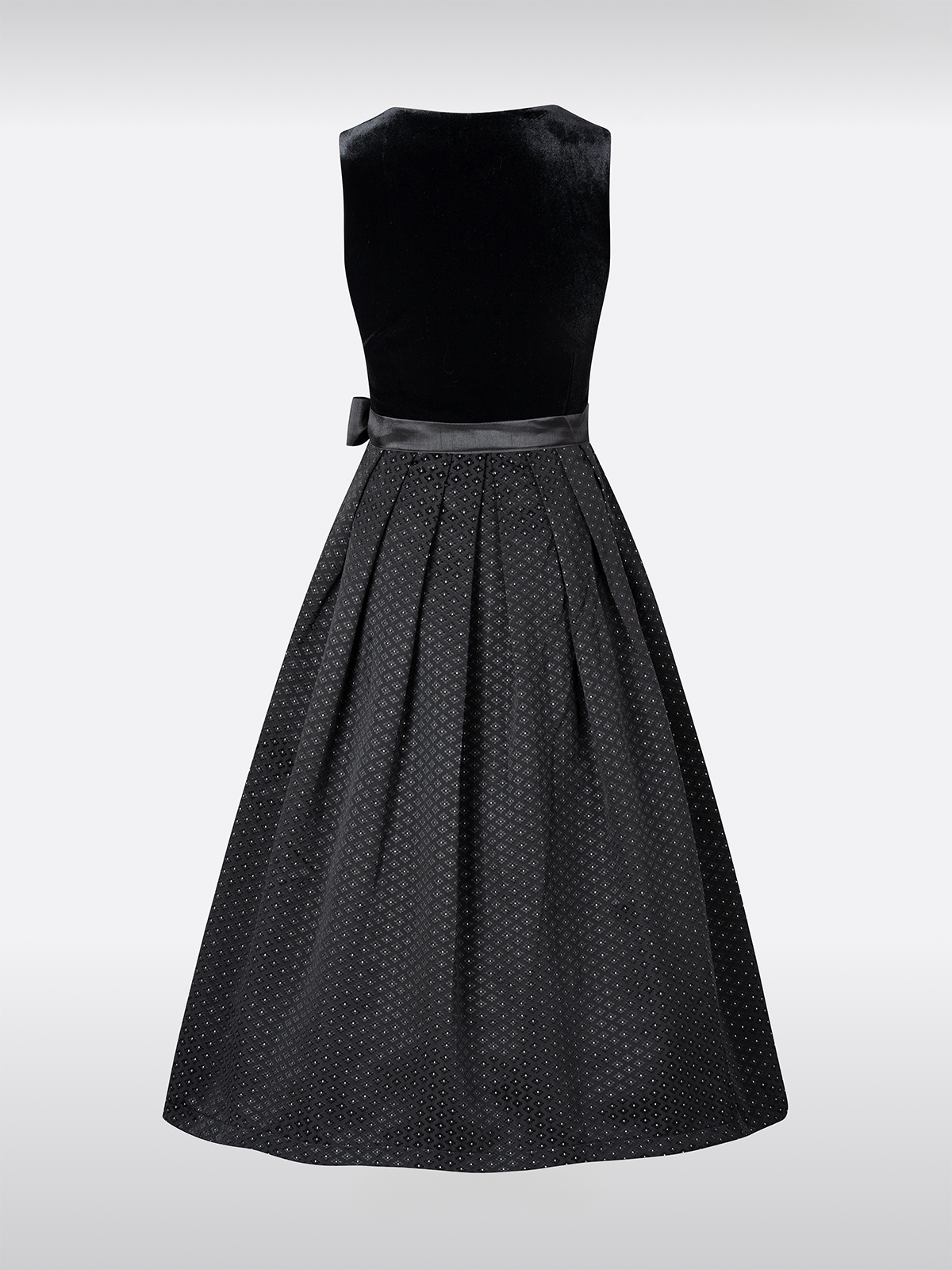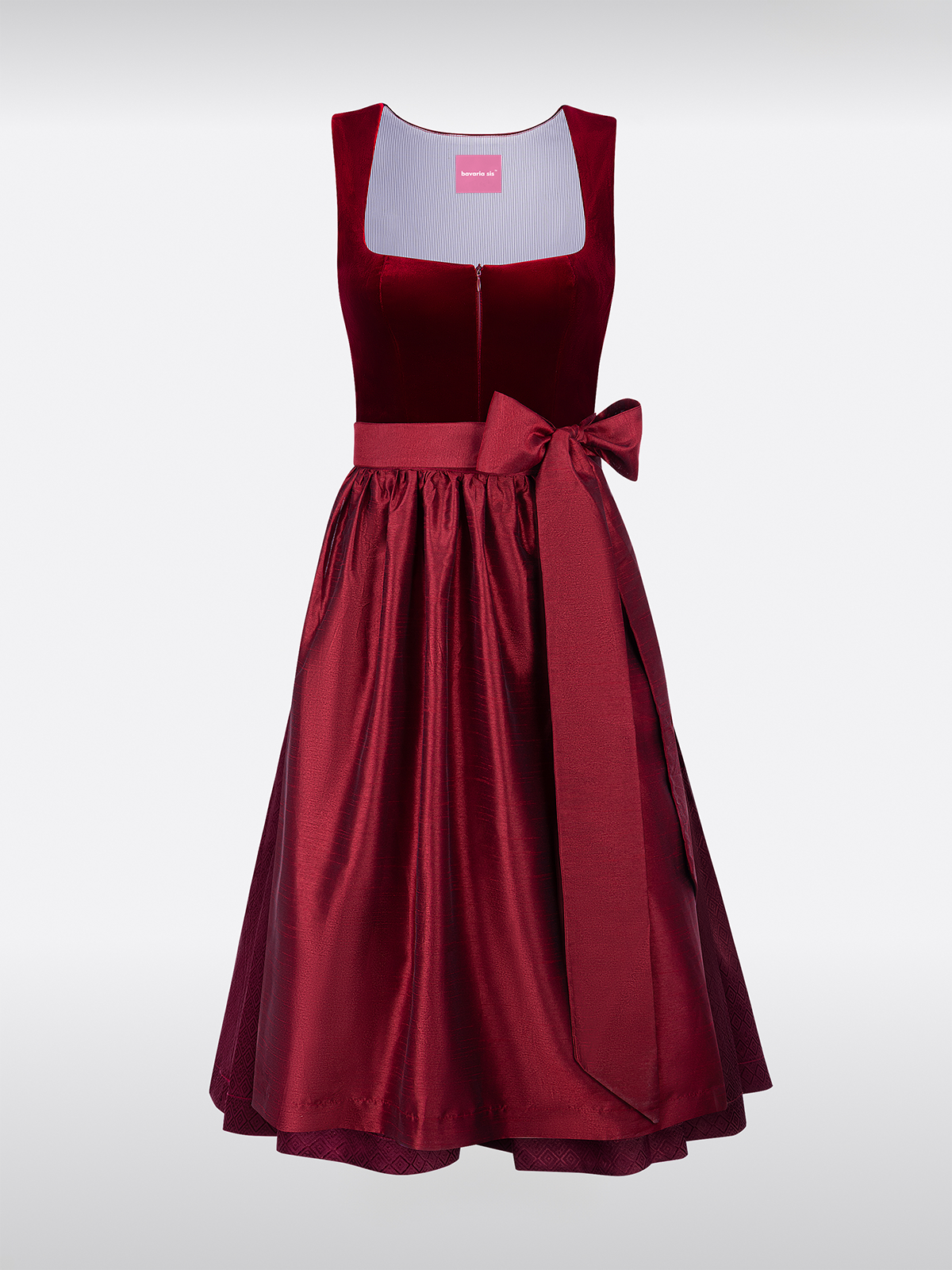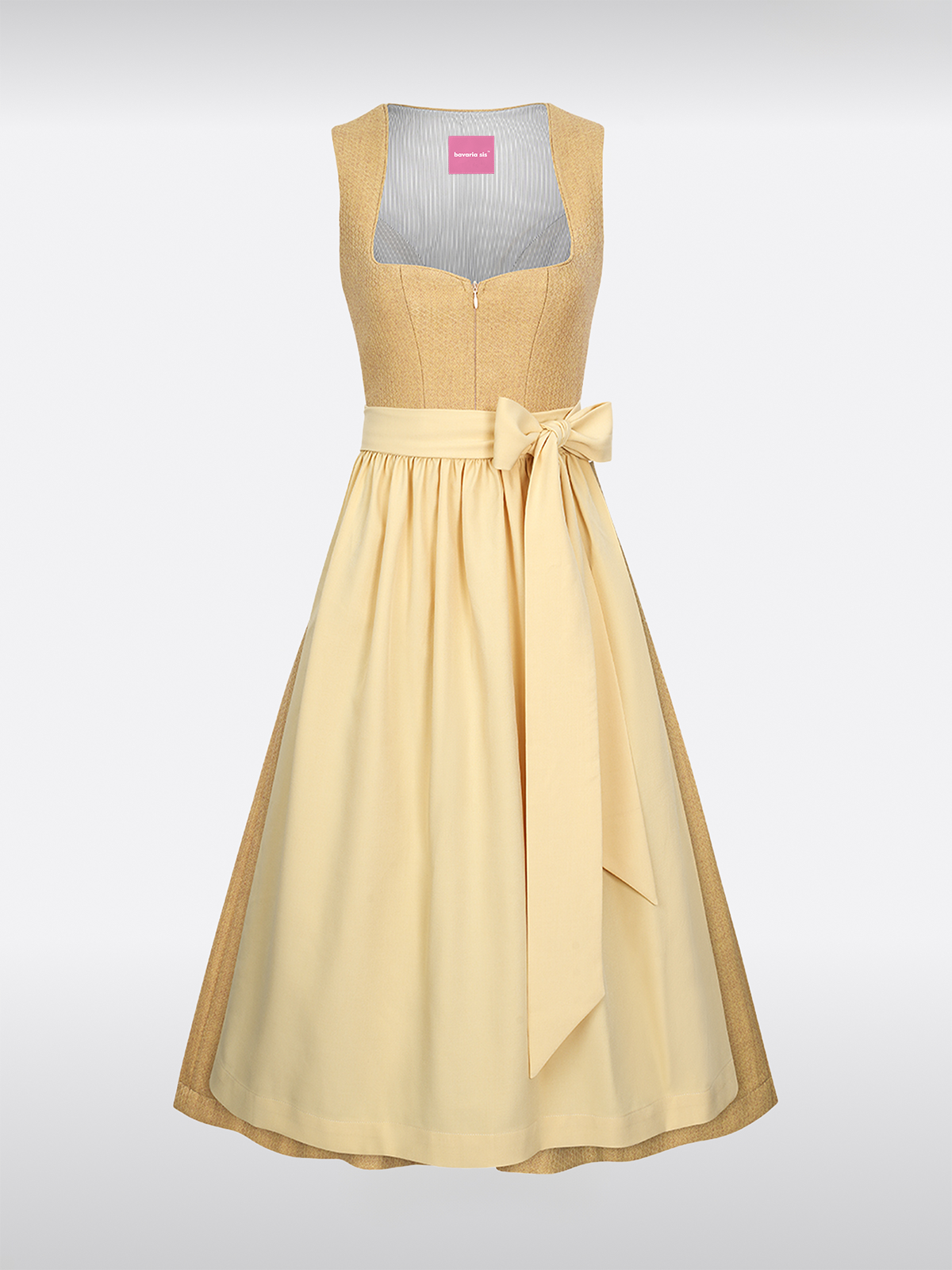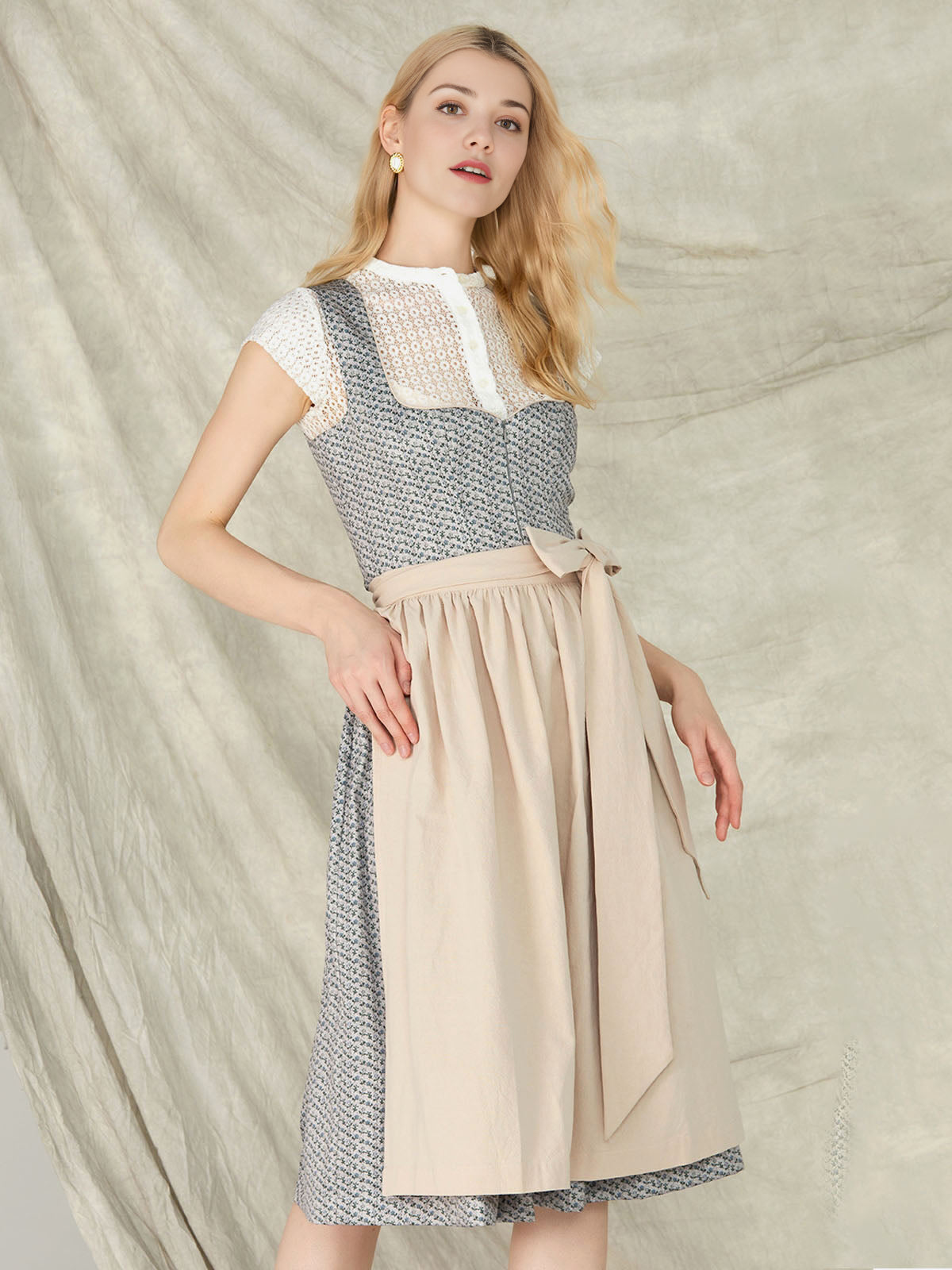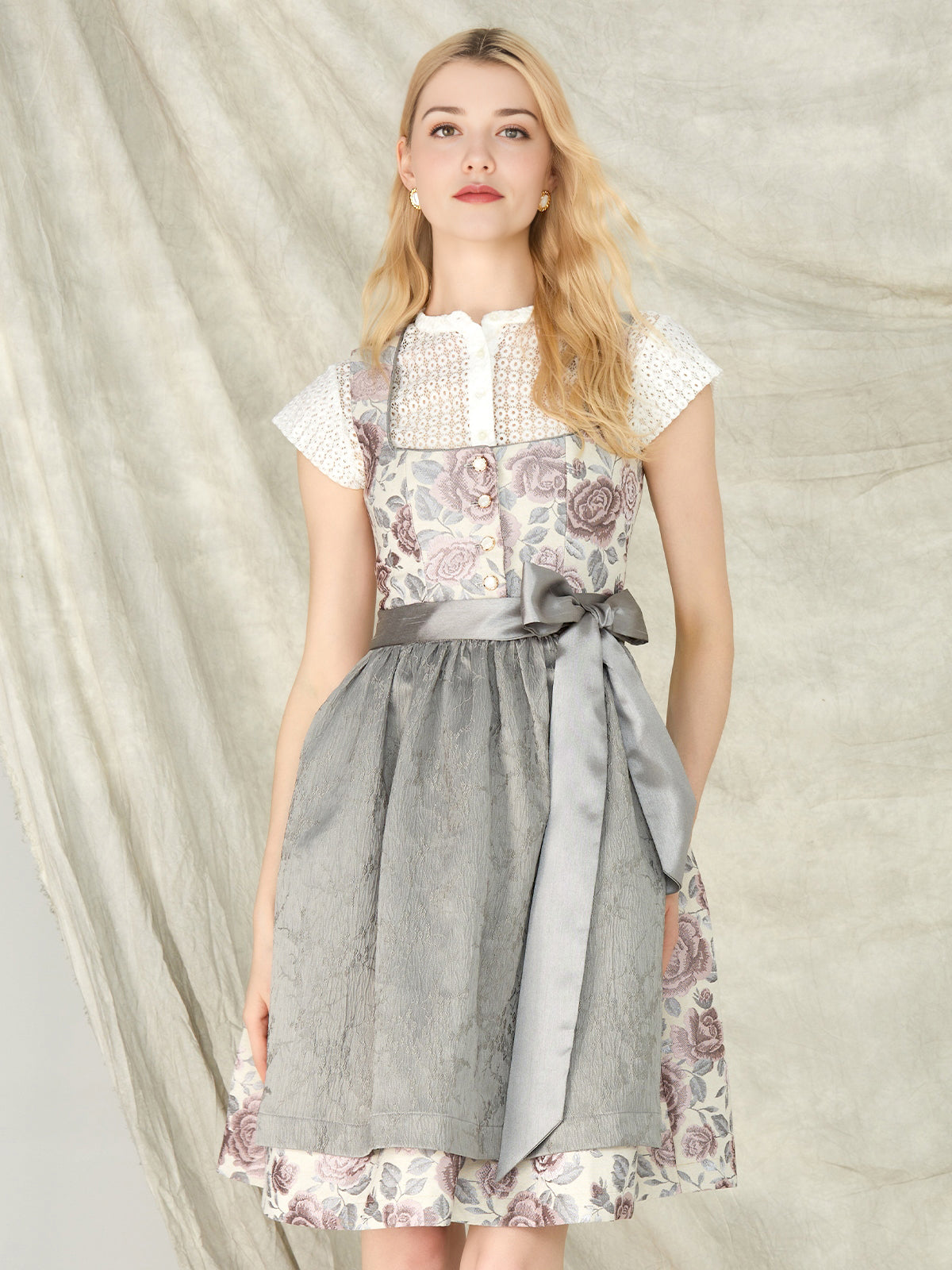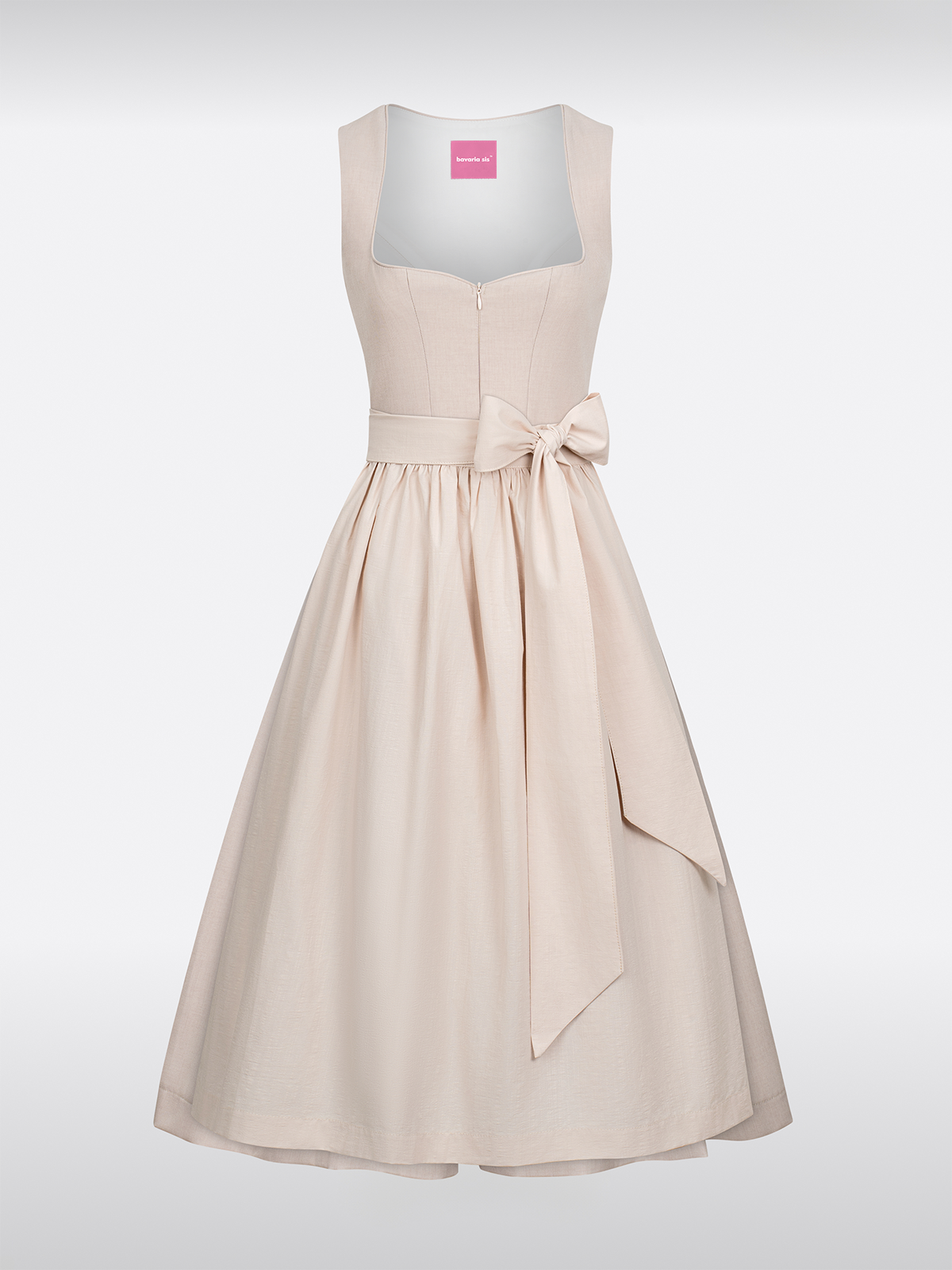The dirndl blouse with eyelet lace
History of lace in fashion
Eyelet lace has a long history in European fashion. It originated in the Middle Ages and was initially a sign of goodness and wealth. Doctors and clergy wore garments with fine eyelet lace to signal their social standing. In the 16th and 17th centuries, eyelet lace became a popular decorative element for women's clothing. It was used to refine blouses, skirts, and underwear. During the development of the dirndl, eyelet lace found its way into the dirndl blouse, where it further enhanced the traditional elegance of the dress.
Design and aesthetics of the dirndl blouse with eyelet lace
The
Dirndl blouse with eyelet lace is characterized by its fine, ornate patterns. The broderie anglaise is used either as a trim on the collar line, on the sleeves, or along the blouse. This gives the dirndl blouse a delicate and feminine touch. The blouse itself has the typical features of the dirndl: it is fitted at the waist, has a rounded shape, and is often worn with an undershirt. The combination of the closed shape of the blouse and the open, airy structure of the broderie anglaise creates an interesting contrast and makes the dirndl blouse particularly striking.
Materials and manufacturing
Traditionally, high-quality materials such as linen or silk are used for the eyelet lace. The production of the eyelet lace is very labor-intensive and requires a high level of craftsmanship. Fine needles and fine threads are used to create the complex patterns. The dirndl blouse itself is usually made of cotton or linen to ensure comfort. The connection between the blouse and the eyelet lace is achieved through careful sewing to achieve the best possible quality.
Occasions and purposes
The dirndl blouse with eyelet lace is particularly suitable for formal occasions. It is often worn at weddings, balls, or other formal events. The delicate and elegant look of the eyelet lace is perfect for these occasions and yet makes it a special occasion. The dirndl blouse with eyelet lace can also be seen at traditional folk festivals like Oktoberfest. Here, it adds an extra touch of elegance to the traditional costume.
The suede dirndl
History of suede in clothing
Suede is a material that has been used for centuries. In the past, it was especially popular with hunters and explorers due to its robust and durable qualities. In the 19th century, suede also became fashionable and was used for jackets, skirts, and other garments. During the development of the dirndl, it found its way into the dirndl world and became a special variation of the traditional garment.
Design and aesthetics of the suede dirndl
The suede dirndl has a unique aesthetic. Suede gives the dirndl a robust and powerful feel. It has a natural texture and a characteristic scent that make it a truly distinctive material. The design of the suede dirndl follows the basic lines of the traditional dirndl, with a nipped-in waist, full skirt, and rounded blouse. However, the use of suede significantly changes the look of the dress, giving it a wild and untamed feel.
Materials and manufacturing
For the
Suede dirndl Traditionally, suede from deer or roe deer is used.The suede must be carefully treated to ensure its quality and durability. It is cleaned, tanned, and processed to make it soft and flexible. Making a dirndl from suede requires a high level of craftsmanship, as suede is harder to work with than other materials. The seams must be particularly strong to withstand the robust nature of the material.
Occasions and purposes
The suede dirndl is particularly suitable for outdoor occasions and events in rural areas. It is often worn at hunting festivals, forest markets, or other nature-related celebrations. The robust nature of suede also makes it suitable for outdoor activities and all weather conditions. However, the suede dirndl can also be seen in the city if you want to make a special impression. It lends the wearer a certain charm and self-confidence.
The dirndl with zipper
History of the zipper in fashion
The zipper was invented in the 19th century and has since become widespread in fashion. Initially, it was a practical means of opening and closing garments more quickly and easily. Over time, the zipper also became a design feature and was offered in a variety of models and colors. In the world of dirndls, the zipper found its place to improve comfort and practicality.
Design and aesthetics of the dirndl with zipper
The zippered dirndl has a modern and practical look. The zipper is usually placed on the side or back of the dirndl. This makes it easier to put on and take off. The zipper can also be used as a design feature to personalize the dirndl. Zippered dirndls are available in various colors and materials, combining the traditional aesthetic of the dirndl with modern elements.
Materials and manufacturing
The zippered dirndl uses the same materials as other dirndl styles, such as cotton, linen, or velvet. The zipper itself is made of metal or plastic. Making a zippered dirndl requires careful planning to ensure the zipper is correctly positioned and functional. The seams around the zipper must be particularly strong to withstand the stress.
Occasions and purposes
The zippered dirndl is particularly suitable for everyday occasions and situations where comfortable and practical clothing is needed. It is often worn on outings, work days, or other activities that require movement. However, the zippered dirndl can also be seen at traditional events such as folk festivals, as it combines the practical advantages of a modern garment with the traditional aesthetic of the dirndl.
Summary
The dirndl blouse with eyelet lace, the suede dirndl and the
Dirndl with zipper These are three fascinating variations of the popular Bavarian and Austrian garment. They demonstrate how the dirndl has evolved over time and how it combines tradition with modern elements. Whether it's the delicate elegance of the eyelet lace, the robust strength of suede, or the practical functionality of the zipper, each variation has its own unique aesthetic and meaning.Today, these dirndl variations continue to play an important role, both in the preservation of culture and in international fashion. They allow the dirndl to be suitable for a variety of occasions and tastes and remain a popular and distinctive symbol of Bavarian and Austrian identity.

